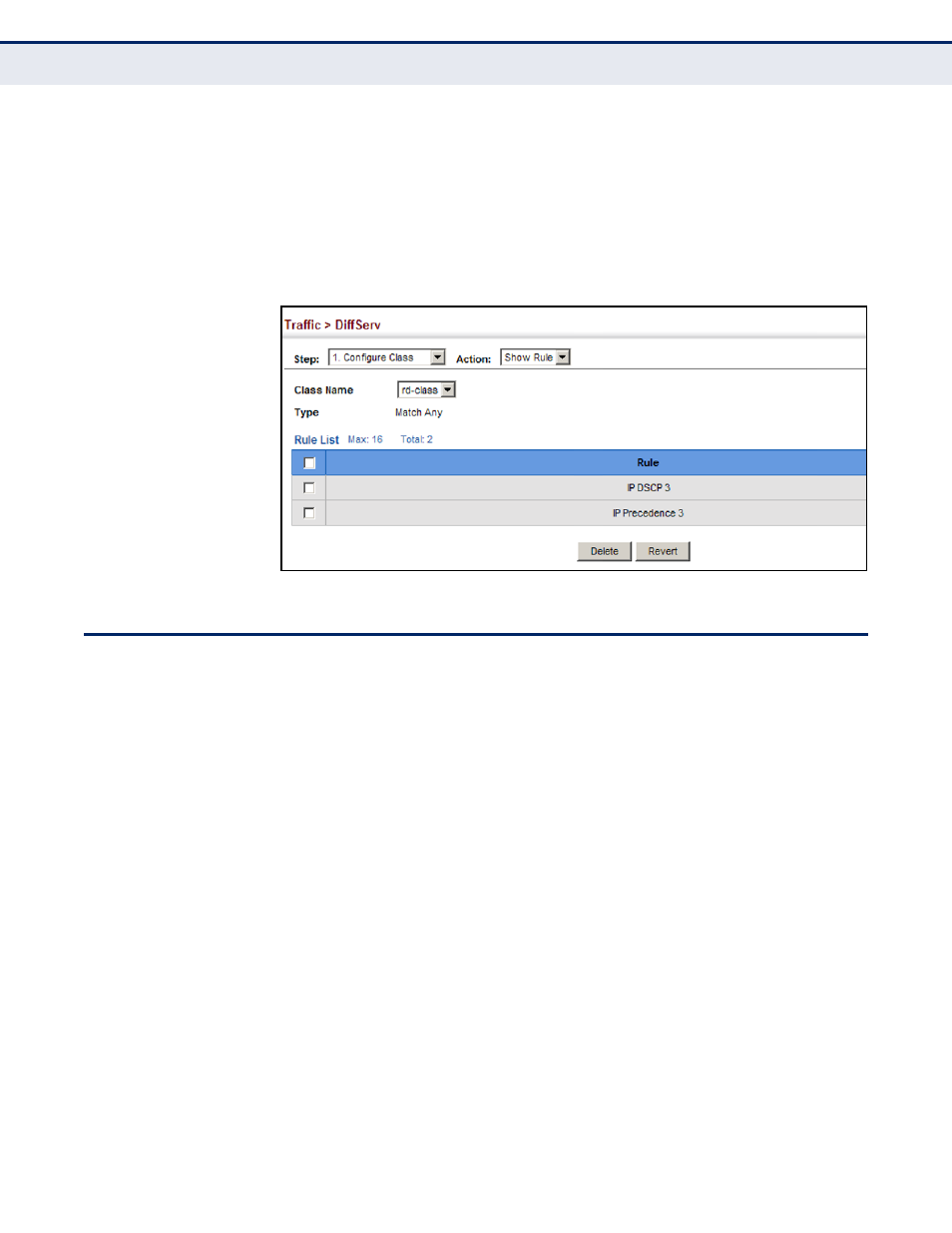Creating qos policies, Figure 123: showing the rules for a class map, Policy map – Microsens MS453490M Management Guide User Manual
Page 239

C
HAPTER
12
| Quality of Service
Creating QoS Policies
– 239 –
To show the rules for a class map:
1.
Click Traffic, DiffServ.
2.
Select Configure Class from the Step list.
3.
Select Show Rule from the Action list.
Figure 123: Showing the Rules for a Class Map
C
REATING
Q
O
S P
OLICIES
Use the Traffic > DiffServ (Configure Policy) page to create a policy map
that can be attached to multiple interfaces. A policy map is used to group
one or more class map statements (
), modify service tagging, and
enforce bandwidth policing. A policy map can then be bound by a service
policy to one or more interfaces (
).
Configuring QoS policies requires several steps. A class map must first be
configured which indicates how to match the inbound packets according to
an access list, a DSCP or IP Precedence value, or a member of specific
VLAN. A policy map is then configured which indicates the boundary
parameters used for monitoring inbound traffic, and the action to take for
conforming and non-conforming traffic. A policy map may contain one or
more classes based on previously defined class maps.
The class of service or per-hop behavior (i.e., the priority used for internal
queue processing) can be assigned to matching packets. In addition, the
flow rate of inbound traffic can be monitored and the response to
conforming and non-conforming traffic based by one of three distinct
policing methods as described below.
Police Flow Meter – Defines the committed information rate (maximum
throughput), committed burst size (burst rate), and the action to take for
conforming and non-conforming traffic.